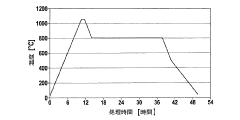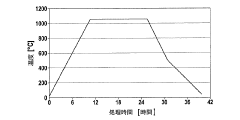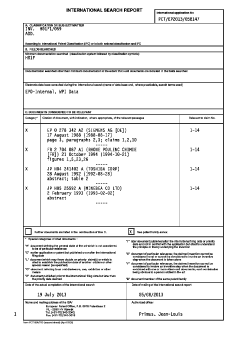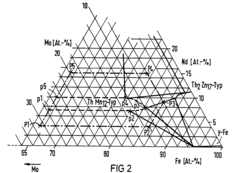Exploring Tungsten's Influence On Magnetic Properties
Tungsten Magnetism Background
Tungsten, a transition metal with atomic number 74, has long been recognized for its exceptional physical properties, including high melting point, density, and strength. However, its influence on magnetic properties has been a subject of growing interest in recent years. The exploration of tungsten's impact on magnetism dates back to the early 20th century, with initial studies focusing on its role as an alloying element in steel and other magnetic materials.
The magnetic behavior of tungsten itself is paramagnetic, meaning it exhibits a weak attraction to magnetic fields. This property, while not remarkable on its own, becomes significant when tungsten is combined with other elements or incorporated into complex structures. The interaction between tungsten atoms and those of ferromagnetic materials can lead to intriguing modifications in magnetic properties, opening up new avenues for research and applications.
One of the key areas where tungsten's influence on magnetism has gained attention is in the field of thin film technology. As the demand for miniaturization in electronic devices continues to grow, the ability to manipulate magnetic properties at the nanoscale becomes increasingly important. Tungsten has shown promise in this regard, particularly in multilayer structures where it can serve as a spacer layer between magnetic materials, influencing their coupling and overall magnetic behavior.
The study of tungsten's role in magnetic materials has also extended to the realm of spintronics, a field that exploits the spin of electrons for information processing and storage. Researchers have found that tungsten can enhance spin-orbit coupling effects, which are crucial for many spintronic applications. This discovery has led to increased interest in tungsten-based heterostructures and their potential for next-generation memory and logic devices.
Furthermore, the exploration of tungsten's magnetic influence has revealed its potential in modifying the Curie temperature of certain materials. By carefully controlling the concentration and distribution of tungsten atoms in magnetic alloys, scientists have demonstrated the ability to fine-tune magnetic properties, potentially leading to materials with improved performance in high-temperature applications.
As research in this field progresses, the complex interplay between tungsten and magnetism continues to unveil new phenomena and possibilities. From enhancing the properties of permanent magnets to enabling novel spintronic devices, the influence of tungsten on magnetic properties represents a rich and evolving area of study with significant implications for future technological advancements.
Market Demand Analysis
The market demand for technologies exploring tungsten's influence on magnetic properties has been steadily growing, driven by the increasing need for advanced magnetic materials in various industries. The electronics sector, particularly in the development of high-performance electronic devices and data storage systems, has shown significant interest in tungsten-based magnetic materials. These materials offer potential improvements in magnetic strength, thermal stability, and overall performance compared to traditional magnetic materials.
In the automotive industry, there is a rising demand for more efficient electric motors and power systems, where tungsten-enhanced magnetic materials could play a crucial role. The ability to create stronger and more compact magnets using tungsten alloys has attracted attention from manufacturers looking to optimize the size and efficiency of electric vehicle components.
The renewable energy sector, especially wind turbine manufacturers, has expressed interest in exploring tungsten's magnetic properties to enhance the performance of generators. The potential for increased energy output and improved durability in harsh environmental conditions makes tungsten-based magnetic materials an attractive option for this growing market.
In the field of medical imaging, there is a continuous push for higher resolution and more precise diagnostic tools. Tungsten's influence on magnetic properties could lead to advancements in MRI technology, potentially offering clearer images and more accurate diagnoses. This has created a niche but high-value market demand within the healthcare industry.
The aerospace and defense sectors have also shown interest in tungsten-enhanced magnetic materials for their potential applications in sensors, guidance systems, and communication devices. The ability to create more robust and reliable magnetic components that can withstand extreme conditions is particularly valuable in these industries.
Research institutions and universities continue to drive demand for materials and technologies related to tungsten's magnetic properties. The ongoing exploration of novel magnetic phenomena and the development of new materials contribute to a steady market for research equipment and materials in this field.
While the market demand is growing, it is important to note that it remains relatively specialized. The high cost of tungsten and the complexity of working with its alloys limit widespread adoption in some applications. However, in high-value, performance-critical sectors, the demand for tungsten-based magnetic materials and related technologies continues to expand, driven by the need for improved efficiency, miniaturization, and enhanced performance in magnetic systems.
Current Challenges
The exploration of tungsten's influence on magnetic properties faces several significant challenges in both research and practical applications. One of the primary obstacles is the complexity of the interactions between tungsten and magnetic materials at the atomic level. The incorporation of tungsten into magnetic systems can lead to intricate changes in electronic structure, which are not always straightforward to predict or model accurately.
Experimental difficulties also pose a considerable challenge. The high melting point of tungsten (3422°C) makes it challenging to create homogeneous alloys or composites with other magnetic materials. This can result in inconsistencies in sample preparation, leading to variability in experimental results and difficulties in reproducing findings across different research groups.
Another critical challenge lies in the precise control and measurement of tungsten's effects on magnetic properties. The influence of tungsten can be subtle and highly dependent on factors such as concentration, distribution, and the specific magnetic material it is combined with. Developing sufficiently sensitive measurement techniques and equipment to detect these nuanced changes remains an ongoing challenge for researchers in the field.
The multiscale nature of magnetic phenomena further complicates the study of tungsten's influence. Effects observed at the nanoscale may not translate directly to bulk materials, necessitating a comprehensive understanding across different length scales. This requires sophisticated experimental setups and advanced computational models, which are not always readily available or fully developed.
From an industrial perspective, the integration of tungsten-enhanced magnetic materials into practical applications presents its own set of challenges. Issues such as cost-effectiveness, scalability of production processes, and long-term stability of the enhanced magnetic properties need to be addressed before widespread adoption can occur.
Environmental and health concerns associated with tungsten processing and use also pose challenges, particularly in the context of sustainable technology development. Ensuring that the benefits of tungsten-enhanced magnetic materials outweigh potential environmental impacts is crucial for their acceptance and implementation.
Lastly, the interdisciplinary nature of this research area demands collaboration between experts in materials science, physics, chemistry, and engineering. Coordinating efforts across these diverse fields and bridging communication gaps between theoretical and experimental researchers remain ongoing challenges in advancing our understanding of tungsten's influence on magnetic properties.
Existing Solutions
01 Magnetic properties of tungsten alloys
Tungsten alloys exhibit unique magnetic properties that can be tailored for specific applications. These alloys often combine tungsten with other elements to enhance magnetic characteristics, such as improved magnetic permeability or reduced coercivity. The composition and processing of these alloys play crucial roles in determining their final magnetic properties.- Magnetic properties of tungsten alloys: Tungsten alloys exhibit unique magnetic properties that can be tailored for specific applications. These alloys often combine tungsten with other elements to enhance magnetic characteristics, such as improved magnetic permeability or reduced coercivity. The composition and processing of these alloys play a crucial role in determining their final magnetic properties.
- Tungsten in magnetic recording media: Tungsten is utilized in magnetic recording media to improve performance and durability. It can be incorporated into thin films or as part of complex multilayer structures to enhance magnetic properties such as coercivity and remanence. The addition of tungsten can also contribute to improved corrosion resistance and thermal stability of magnetic recording layers.
- Magnetic sensors using tungsten: Tungsten is employed in various magnetic sensor designs to enhance sensitivity and performance. It can be used in thin film structures, as electrode material, or in combination with other materials to create highly sensitive magnetic field detectors. The integration of tungsten in these sensors often results in improved signal-to-noise ratios and better overall device characteristics.
- Tungsten in magnetic shielding applications: The magnetic properties of tungsten make it suitable for use in magnetic shielding applications. When combined with other materials or used in specific structures, tungsten can effectively attenuate magnetic fields. This property is particularly useful in various electronic devices, medical equipment, and scientific instruments where magnetic interference needs to be minimized.
- Nanostructured tungsten for magnetic applications: Nanostructured forms of tungsten, such as nanoparticles or nanowires, exhibit unique magnetic properties that differ from bulk tungsten. These nanostructures can be engineered to have specific magnetic characteristics, making them suitable for advanced applications in spintronics, magnetic data storage, and novel magnetic materials. The size, shape, and surface properties of these nanostructures significantly influence their magnetic behavior.
02 Tungsten in magnetic recording media
Tungsten is utilized in magnetic recording media to improve performance and durability. It can be incorporated into thin film structures or as part of composite materials to enhance magnetic properties, increase wear resistance, and optimize signal-to-noise ratios in recording devices.Expand Specific Solutions03 Magnetic field sensors using tungsten
Tungsten-based materials are employed in the development of high-sensitivity magnetic field sensors. These sensors leverage the unique magnetic properties of tungsten or its alloys to detect and measure magnetic fields with high precision, making them suitable for various applications in electronics and scientific instrumentation.Expand Specific Solutions04 Tungsten in magnetic shielding applications
The magnetic properties of tungsten make it valuable for magnetic shielding applications. Tungsten-based materials can be used to create effective shields against electromagnetic interference, protecting sensitive electronic components or creating controlled magnetic environments for specialized equipment.Expand Specific Solutions05 Nanostructured tungsten for magnetic applications
Nanostructured forms of tungsten, such as nanoparticles or thin films, exhibit enhanced magnetic properties compared to bulk materials. These nanostructures can be engineered to achieve specific magnetic characteristics, opening up new possibilities in fields like spintronics, magnetic data storage, and advanced sensing technologies.Expand Specific Solutions
Key Industry Players
The exploration of tungsten's influence on magnetic properties is currently in a growth phase, with increasing market size and technological advancements. The global market for magnetic materials is expanding, driven by applications in electronics, energy, and automotive sectors. The technology's maturity varies across different applications, with companies like Toshiba Corp., Applied Materials, Inc., and TDK Corp. leading in research and development. Universities such as Central South University and the University of California are contributing significantly to fundamental research. Collaborations between industry leaders like Fujitsu Ltd. and Robert Bosch GmbH are accelerating practical applications. The competitive landscape is diverse, with both established players and emerging startups vying for market share and technological breakthroughs in this promising field.
Applied Materials, Inc.
TDK Corp.
Core Innovations
- A magnetic material composed of transition metals (60-90% by weight), rare earth metals (10-20% by weight), and tungsten (5-25% by weight) offers enhanced stability and reduced raw material costs, with tungsten stabilizing the lattice structure and promoting anisotropy, allowing for efficient production without supply restrictions.
- A ternary alloy system with iron, a rare earth metal, and molybdenum or tungsten, where the iron content is between 60-85 atom%, and the rare earth metal and molybdenum/tungsten content is between 2-20 and 4-35 atom% respectively, allowing for variation of magnetic properties without the need for metalloids, and can include additional components like cobalt for enhanced performance.
Material Characterization
Material characterization plays a crucial role in understanding tungsten's influence on magnetic properties. This process involves a comprehensive analysis of the material's structure, composition, and behavior under various conditions. X-ray diffraction (XRD) is a primary technique used to determine the crystalline structure of tungsten-based materials, providing insights into phase composition and lattice parameters. The diffraction patterns obtained from XRD can reveal the presence of different tungsten phases and their relative proportions, which directly impact magnetic properties.
Scanning electron microscopy (SEM) coupled with energy-dispersive X-ray spectroscopy (EDS) offers valuable information about the surface morphology and elemental composition of tungsten-containing samples. This technique allows researchers to observe grain sizes, boundaries, and distributions, which are essential factors in determining magnetic behavior. Additionally, transmission electron microscopy (TEM) provides high-resolution imaging of the material's microstructure, enabling the visualization of defects, dislocations, and grain orientations that influence magnetic properties.
Magnetic characterization techniques, such as vibrating sample magnetometry (VSM) and superconducting quantum interference device (SQUID) magnetometry, are employed to measure the magnetic properties of tungsten-containing materials. These methods allow for the determination of magnetic susceptibility, saturation magnetization, coercivity, and other key parameters that describe the material's magnetic behavior. By correlating these magnetic measurements with the structural and compositional data obtained from other characterization techniques, researchers can establish relationships between tungsten content, microstructure, and magnetic properties.
X-ray photoelectron spectroscopy (XPS) is utilized to analyze the chemical state and electronic structure of tungsten atoms within the material. This surface-sensitive technique provides information about the oxidation states of tungsten and its interactions with other elements, which can significantly influence magnetic properties. Furthermore, neutron diffraction experiments offer unique insights into the magnetic structure of tungsten-containing materials, allowing for the determination of magnetic moments and their spatial arrangements.
Thermal analysis techniques, such as differential scanning calorimetry (DSC) and thermogravimetric analysis (TGA), are employed to study phase transitions and thermal stability of tungsten-based magnetic materials. These methods can reveal important information about the material's behavior under different temperature conditions, which is crucial for understanding its magnetic properties in various applications and environments.
Environmental Impact
The environmental impact of exploring tungsten's influence on magnetic properties is a crucial aspect that requires careful consideration. The extraction and processing of tungsten, as well as the manufacturing of magnetic materials, can have significant environmental implications.
Tungsten mining operations often involve open-pit mining or underground mining techniques, which can lead to habitat destruction, soil erosion, and water pollution. The extraction process may release harmful chemicals and heavy metals into the surrounding environment, potentially contaminating groundwater and surface water sources. Additionally, the energy-intensive nature of tungsten processing contributes to increased carbon emissions and greenhouse gas production.
The production of magnetic materials incorporating tungsten also raises environmental concerns. The manufacturing processes often involve high-temperature treatments and chemical reactions, which can result in air pollution and the generation of hazardous waste. Proper disposal and management of these byproducts are essential to minimize their impact on ecosystems and human health.
Furthermore, the increasing demand for tungsten in magnetic applications may lead to intensified mining activities, potentially exacerbating existing environmental issues in tungsten-rich regions. This could result in the depletion of natural resources and the disruption of local ecosystems, particularly in areas with sensitive biodiversity.
However, it is important to note that advancements in tungsten-based magnetic materials may also offer environmental benefits. Improved magnetic properties could lead to more efficient electrical systems, reducing overall energy consumption and associated carbon emissions. Additionally, the development of more durable and long-lasting magnetic components could decrease the need for frequent replacements, thereby reducing waste generation and resource consumption in the long term.
To mitigate the environmental impact of tungsten exploration and magnetic material production, several strategies can be implemented. These include adopting cleaner production technologies, implementing stringent waste management practices, and investing in research to develop more environmentally friendly extraction and processing methods. Additionally, promoting recycling and circular economy principles in the tungsten and magnetic materials industries can help reduce the reliance on primary resource extraction and minimize overall environmental footprint.
As research into tungsten's influence on magnetic properties continues, it is crucial to maintain a balance between technological advancement and environmental stewardship. Conducting comprehensive environmental impact assessments, adhering to strict regulatory standards, and fostering collaboration between industry, academia, and environmental organizations can help ensure that the exploration of tungsten's magnetic properties proceeds in an environmentally responsible manner.





